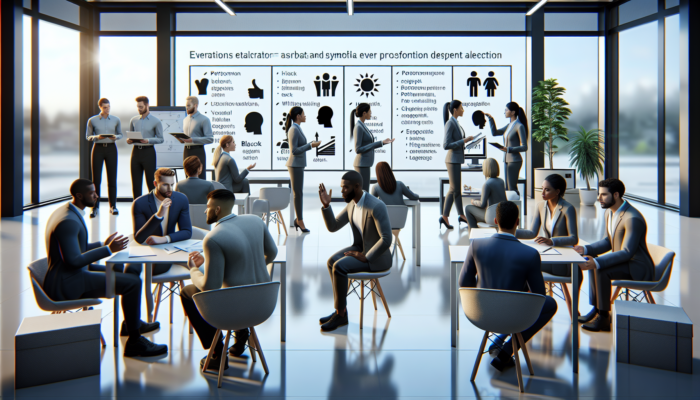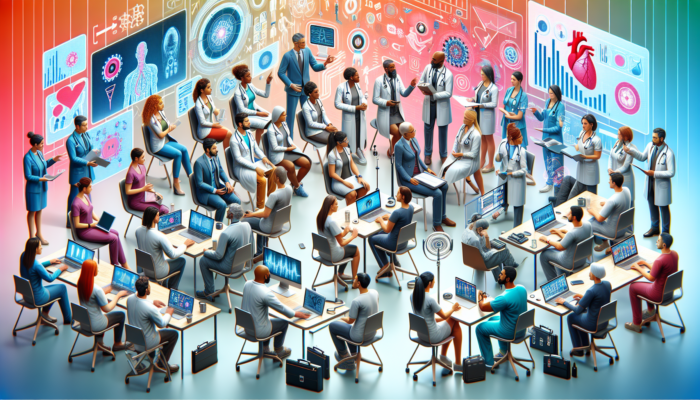Last Updated on 06/10/2025 by Admin
Comprehensive Insights into Hearing Loss in Students
What Are the Different Types of Hearing Loss That Educators Should Know?
Gaining a thorough understanding of the various types of hearing loss is essential for educators, as it equips them to adapt their teaching methods effectively. Hearing loss generally categorizes into three primary types: conductive hearing loss, sensorineural hearing loss, and mixed hearing loss. Each type presents unique challenges and requires different approaches for support.
- Conductive Hearing Loss: This type arises when sound waves encounter obstacles while traveling through the outer ear canal to the eardrum and the small bones of the middle ear. Fortunately, it often responds well to medical or surgical treatment.
- Sensorineural Hearing Loss: This form occurs due to damage to the inner ear or the auditory nerve pathways leading to the brain. Typically, it is permanent and frequently necessitates the use of hearing aids or cochlear implants.
- Mixed Hearing Loss: This category combines elements of both conductive and sensorineural hearing loss, indicating that both outer/middle ear and inner ear components are impaired.
- Auditory Neuropathy Spectrum Disorder (ANSD): This less common type disrupts the transmission of sound from the inner ear to the brain, resulting in inconsistent sound perception.
- Unilateral Hearing Loss: This condition affects one ear, significantly impacting a student’s ability to locate sound direction and can hinder effective communication.
By identifying these types of hearing loss, educators can gain valuable insights into the specific challenges faced by students in the classroom, enabling them to provide tailored support and resources.
How Does Hearing Loss Affect a Student’s Learning Experience?
The impact of hearing loss on a student’s educational journey can be profound and multifaceted. Students experiencing hearing loss may encounter significant difficulties in communication, which can lead to obstacles in understanding classroom instructions and engaging in discussions effectively. These challenges can manifest in various ways, such as trouble following verbal directions, delays in language development, and difficulties in social interactions with peers, which are crucial for a well-rounded educational experience.
Academically, students with hearing loss often fall behind their peers, particularly in literacy and language-intensive subjects. They may miss important auditory cues that are essential for grasping context in conversations, thereby affecting their critical thinking and reasoning capabilities. Additionally, the emotional and psychological repercussions of hearing loss can result in feelings of isolation and frustration, further diminishing their academic participation. It is vital for educators to cultivate a supportive classroom environment to address and alleviate these challenges, thereby promoting better engagement and learning outcomes.
What Signs and Symptoms Indicate Hearing Difficulties in Students?
Teachers are instrumental in identifying students who may exhibit signs of hearing difficulties. Early recognition of symptoms can lead to timely interventions that significantly benefit a student’s educational path. Some common indicators of potential hearing loss include:
- Challenges in following directions or responding adequately to questions.
- Frequent requests for repetition or clarification during lessons.
- Signs of inattentiveness or appearing disengaged during class discussions.
- Difficulty keeping pace with collaborative tasks or group work.
- Expressions of frustration or behavioral issues stemming from communication barriers.
Being vigilant about these signs empowers educators to initiate necessary conversations with parents and specialists, ensuring that appropriate assessments and support mechanisms are established to aid students effectively.
Strategies for Fostering an Inclusive Classroom Environment
What Are the Advantages of Using Visual Aids for Students with Hearing Loss?
Visual aids are invaluable tools that significantly enhance the learning experience for students with hearing loss. They offer alternative avenues for accessing information, thus simplifying the understanding of complex concepts. Visual aids can encompass a variety of formats, including charts, diagrams, images, videos, and even tactile objects that engage multiple senses.
For example, utilizing pictorial representations of vocabulary words or employing visually engaging infographics can solidify understanding and improve retention rates. Furthermore, tools such as whiteboards for live note-taking and captioned videos ensure that visual elements are integrated with verbal communication, catering to a wide range of learning styles. This multisensory strategy not only boosts student engagement but also facilitates connections between auditory information and visual stimuli, leading to improved comprehension and learning outcomes.
How to Effectively Incorporate Assistive Technology in the Classroom?
Integrating assistive technology into classroom activities is essential for overcoming communication barriers faced by students with hearing loss. Devices such as FM systems enhance sound quality by transmitting a teacher’s voice directly to a student’s hearing aid, effectively reducing background noise and improving clarity. Additionally, speech-to-text software offers real-time transcription of spoken language, allowing students to follow along visually with the lesson content.
To maximize the effectiveness of these technologies, educators should begin by assessing the unique needs of their students. Organizing training sessions on how to effectively utilize these tools will help ensure that students feel confident in their use. Moreover, embedding technology into daily lessons—such as using captioned videos during discussions—can foster an inclusive atmosphere that benefits all learners. Collaborating with IT departments can further facilitate access to the latest technological advancements, enhancing the overall learning experience.
Why Are Strategic Seating Arrangements Crucial for Students with Hearing Loss?
The arrangement of seating in a classroom can significantly affect a student’s ability to engage and learn effectively. For students with hearing loss, strategic seating placements can enhance their ability to see lips for lip-reading and improve their auditory access to both the teacher and classmates.
Positioning students closer to the front of the classroom reduces background noise and allows them to observe facial expressions, which play a critical role in understanding context and emotional cues. Moreover, seating students in a semi-circular formation can facilitate better interaction and enhance their sense of belonging. It is also beneficial to periodically rotate seating assignments to encourage diverse interactions, allowing students with hearing loss to develop relationships with a variety of classmates.
What Strategies Can Promote Peer Interaction in the Classroom?
Encouraging peer interaction is essential for fostering an inclusive classroom environment for students with hearing loss. Group activities provide opportunities to enhance communication skills while also building relationships among students. Implementing buddy systems, where students work in pairs or small groups, creates supportive avenues for socialization and collaboration.
Additionally, teachers can design activities that require collaboration, such as project-based learning, which promotes teamwork and engages all students. Incorporating games that prioritize communication and collaboration can further enhance engagement across the classroom. Furthermore, providing training for peers on effective communication strategies with classmates who have hearing loss—such as using clear speech and visual cues—can enrich the overall classroom dynamic, ensuring every student feels included and valued.
Expert Insights on Supporting Students with Hearing Loss in Education
What Are Real-World Examples of Successful Inclusive Education Practices?
Real-world examples of successful inclusive education practices underscore the effectiveness of tailored strategies for students with hearing loss. These case studies reveal that when educational institutions prioritize inclusion, the outcomes can be transformative for all students involved.
- Collaborative Classrooms: Schools employing team-teaching models, where special education and general education teachers co-teach, have reported notable improvements in academic performance and social skills among students with hearing loss.
- Technology Integration: Educational programs that incorporate assistive technology, such as captioning in videos or interactive learning applications, have demonstrated significant increases in engagement and comprehension for students with hearing loss.
- Peer Support Programs: Initiatives fostering peer mentoring, wherein hearing students are trained to support their classmates with hearing impairments, have led to improved social integration and enhanced self-esteem for all participants involved.
- Parental Involvement: Schools actively engaging parents in the educational process—through workshops or consistent communication—tend to experience greater success in student outcomes.
These examples highlight the necessity of a holistic, collaborative approach in cultivating an inclusive educational environment that benefits all learners, particularly those with hearing loss.
What Advocacy Role Do Teachers Play for Students with Hearing Loss?
Teachers can serve as powerful advocates for students with hearing loss, ensuring that they receive the appropriate accommodations and support necessary for academic success. Advocacy begins with understanding each student’s individual needs and effectively communicating these to parents, administrators, and support personnel.
Effective advocacy strategies encompass participation in Individualized Education Program (IEP) meetings, where educators can address specific accommodations required for students with hearing loss. Additionally, teachers should provide professional development opportunities within their institutions to raise awareness about the challenges faced by these students. Cultivating relationships with local organizations and resources, such as hearing health professionals, can create a robust support network for students and their families.
Staying informed about relevant legislation and best practices in special education empowers teachers to confidently advocate for their students’ needs. By championing these needs, educators can play a vital role in shaping educational policies and practices that positively impact their students with hearing loss.
How to Foster Collaboration with Specialists in Supporting Students?
Collaborating with specialists, including audiologists, speech therapists, and educational psychologists, is crucial in establishing a supportive learning environment for students with hearing loss. Teachers can initiate this collaborative process by opening lines of communication with these professionals to gain insights into the specific needs of their students.
Regular meetings to discuss student progress and share insights can lead to more tailored interventions and support strategies. Incorporating specialists into classroom activities, whether through direct instruction or co-teaching models, can provide both students and teachers with valuable resources and expertise that enhance the learning experience. Furthermore, organizing training sessions led by specialists can equip educators with the skills necessary to effectively support students with hearing loss.
Building a collaborative team promotes a multidisciplinary approach to education, ensuring that all facets of a student’s development—academic, social, and emotional—are comprehensively addressed.
Effective Communication Techniques for Success
What Are the Best Practices for Clear Speech in the Classroom?
Clear speech is fundamental for students with hearing loss to comprehend verbal instructions effectively. Best practices for achieving this include speaking slowly, articulating words clearly, and avoiding overly complex language structures. Maintaining consistent eye contact while speaking can also aid students in following along more easily and understanding the information being conveyed.
Utilizing natural gestures and facial expressions enhances communication by providing visual context that complements spoken words. Educators should be mindful of their surroundings; minimizing background noise can greatly improve sound clarity for students. For instance, creating a quiet classroom environment or employing sound-dampening materials can contribute to a more acoustically friendly learning atmosphere.
Additionally, it is advantageous to repeat and rephrase key information as necessary. This not only reinforces significant concepts but also ensures that students with hearing loss can grasp what is being taught. Collectively, these strategies foster an inclusive environment where all students can thrive and excel.
How Can Sign Language and Cued Speech Enhance Communication?
Incorporating sign language or cued speech into classroom communication can greatly improve understanding for students with hearing loss. Sign language offers a visual modality that effectively conveys meaning, enabling students to access information in a manner that may resonate better than spoken language alone.
Teachers can introduce basic sign language to the entire class, fostering an inclusive atmosphere where all students feel empowered to communicate. Cued speech, which employs hand signs alongside spoken language to clarify phonetic sounds, can be particularly beneficial for students who are hard of hearing. These methods promote enhanced communication and can serve as invaluable tools for improving comprehension among students with hearing loss.
Training sessions for educators on how to implement these communication techniques can build confidence and competence in their use. Involving peers in this learning process can further strengthen social interactions, creating a more cohesive and supportive classroom community.
How to Encourage Peer Interaction Among Students?
Fostering an environment where students with hearing loss can comfortably interact with their peers is essential for their social and emotional development. Teachers can implement various strategies to promote these interactions, such as structured group activities that necessitate collaboration and teamwork.
Creating inclusive group projects allows students to engage with one another, sharing ideas and learning from diverse perspectives. Additionally, incorporating social skills training into the curriculum equips all students with the necessary tools to communicate effectively and supportively with their classmates who have hearing loss.
Positive reinforcement when peer interactions occur can further bolster confidence among students. Initiatives such as “buddy systems” or mentorship programs can also facilitate deeper connections among classmates, ensuring that students with hearing loss feel included and valued within the classroom community.
Research-Backed Insights on Supporting Students with Hearing Loss
How Does Inclusive Education Affect Academic Performance?
Research has shown that inclusive education significantly enhances academic outcomes for students with hearing loss. When inclusive practices are implemented effectively, they create environments that allow all students to learn from one another and engage actively in their educational experiences.
Studies indicate that students with hearing loss in inclusive settings often outperform those in segregated environments. This improvement is attributed to increased access to diverse teaching methods and peer learning opportunities, which enhance motivation and engagement, leading to better retention of information.
Furthermore, educators who adapt their instructional strategies to accommodate various learning styles—such as visual, auditory, and kinesthetic—can elevate overall student performance. In inclusive classrooms, the collaborative learning atmosphere fosters a sense of belonging, facilitating both academic and social development for all students involved.
What Social and Emotional Benefits Come from Inclusive Practices?
Inclusive educational environments provide substantial social and emotional benefits for students with hearing loss. Research has demonstrated that when students are integrated into mainstream classrooms, they experience notable improvements in self-esteem and social skills.
By interacting with their peers, students with hearing loss develop critical communication skills and form friendships, both of which are vital for emotional well-being. Additionally, inclusive settings help diminish feelings of isolation and stigma, nurturing a culture of acceptance and understanding among all students.
Teachers play a crucial role in cultivating this supportive atmosphere. By promoting empathy and inclusivity through classroom discussions and group activities, they can enhance the social fabric of the classroom, ensuring that all students feel valued and respected as members of the learning community.
What Are the Long-Term Benefits of Early Intervention?
Implementing early intervention strategies in education is critical for students with hearing loss, as it establishes a foundation for long-term success. Research supports the notion that when hearing loss is identified and addressed early, students tend to experience improved academic performance and social outcomes throughout their educational journey.
Employing early intervention strategies, such as speech therapy, auditory training, and comprehensive family support programs, can profoundly influence a child’s development. These interventions not only enhance language skills but also foster confidence and engagement within the classroom.
Teachers can actively contribute to early intervention efforts by conducting regular assessments and collaborating with specialists to identify students who may be at risk. Establishing partnerships with families to provide resources and support can further amplify the effectiveness of early intervention strategies, ensuring children with hearing loss receive the necessary assistance from the outset of their educational experiences.
What Are the Key Communication Strategies Educators Should Use in the Classroom?
Implementing specific communication techniques tailored for students with hearing loss can significantly support their learning process. Research-backed strategies include the use of clear and straightforward language, visual supports, and hands-on learning experiences that engage students.
Teachers should also employ strategies such as repeating essential information and encouraging students to ask questions to clarify understanding. Utilizing visual aids, such as charts and diagrams, can further enhance comprehension. Additionally, fostering an environment where students feel comfortable expressing their needs and concerns is vital for effective communication.
Professional development opportunities that focus on communication techniques can equip educators with the necessary skills to meet diverse student needs. By promoting an atmosphere of open dialogue and support, teachers can enrich the learning experience for all students, particularly those with hearing loss.
Importance of Continuous Professional Development for Educators
Why Is Ongoing Training Essential for Supporting Students with Hearing Loss?
Continuous professional development is crucial for educators who aim to effectively support students with hearing loss. The educational landscape is continuously evolving, making it imperative for teachers to stay informed about the latest research, technologies, and pedagogical strategies that enhance inclusivity and learning.
Ongoing training equips teachers with the skills necessary to adapt their teaching methods and implement effective strategies that cater to the diverse needs of their students. Workshops, online courses, and conferences focused on special education practices can deepen teachers’ understanding of hearing loss and its implications for learning.
Moreover, fostering a culture of collaboration among educators encourages the sharing of best practices and experiences, ultimately benefiting all students. When teachers possess the latest knowledge and tools, they are better prepared to advocate for and support their students with hearing loss effectively.
How Can Teachers Access Quality Professional Development Resources?
Access to quality resources is essential for the professional growth of teachers. Numerous reputable organizations and institutions offer valuable training materials and opportunities for educators seeking to enhance their skills in supporting students with hearing loss.
Resources like the American Speech-Language-Hearing Association (ASHA) and the International Society for Technology in Education (ISTE) provide training modules, webinars, and certification programs tailored to various aspects of special education. Local universities often organize workshops and courses focused on inclusive practices, further aiding professional development.
Online platforms such as Coursera and edX offer flexible learning options for educators worldwide, enabling them to access courses on teaching students with hearing impairments at their convenience. By leveraging these resources, teachers can continuously improve their practices, fostering a more supportive classroom environment for all students.
How to Build a Supportive School Culture for Students with Hearing Loss?
Establishing a supportive school culture is vital for enhancing the educational experience of students with hearing loss. This culture is cultivated through collaborative efforts involving teachers, administrators, and staff to create a nurturing and accepting environment.
Strategies to promote this culture include raising awareness and understanding of hearing loss among all students and staff members. Implementing school-wide initiatives that celebrate diversity and inclusion can foster a sense of belonging for students with hearing loss and encourage acceptance among their peers.
Regular training sessions focused on inclusivity and effective communication can equip all staff with the necessary tools to support students. Creating avenues for peer mentorship and collaboration further strengthens the community, ensuring that students with hearing loss feel valued and embraced within the school setting.
Frequently Asked Questions about Supporting Students with Hearing Loss
What Are the Common Types of Hearing Loss?
Common types of hearing loss include conductive hearing loss, sensorineural hearing loss, mixed hearing loss, auditory neuropathy spectrum disorder, and unilateral hearing loss. Each type presents distinct characteristics that influence how sound is perceived and processed.
How Can Teachers Identify Students with Hearing Loss?
Teachers can identify students with hearing loss by observing signs such as difficulties in following directions, frequent requests for repetition, and indications of disengagement during class activities. Awareness of these signs is crucial for timely interventions.
What Are Effective Visual Aids for Students with Hearing Loss?
Effective visual aids for students with hearing loss encompass charts, diagrams, videos, images, and infographics that complement verbal instruction, thereby making learning more accessible and engaging for students.
How Important Is Seating Arrangement for Students with Hearing Loss?
Seating arrangements are critical for students with hearing loss, as they enhance visibility for lip-reading and improve auditory access to the teacher and fellow students, fostering greater engagement and participation in classroom activities.
What Are Key Strategies for Promoting Peer Interaction?
Key strategies for promoting peer interaction include structured group activities, buddy systems, and social skills training, all aimed at creating an inclusive environment that encourages communication and the development of friendships among students.
How Can Teachers Advocate for Students with Hearing Loss?
Teachers can advocate for students with hearing loss by ensuring that necessary accommodations are provided, participating in IEP meetings, and raising awareness about the challenges faced by these students among staff and administration.
What Role Do Specialists Play in Supporting Students with Hearing Loss?
Specialists such as audiologists and speech therapists provide essential support and guidance, collaborating with teachers to design interventions that meet the specific needs of students with hearing loss and enhance their learning experience.
What Are the Benefits of Using Assistive Technology in the Classroom?
Assistive technology, including FM systems and speech-to-text software, helps bridge communication gaps, enhancing accessibility and understanding for students with hearing loss, thus promoting better learning outcomes.
Why Is Continuous Professional Development Important for Teachers?
Continuous professional development is vital for teachers to remain updated on best practices and new technologies, equipping them to effectively support students with hearing loss and create an inclusive educational environment.
How Can Parents Be Involved in Supporting Students with Hearing Loss?
Parents can actively participate in supporting students with hearing loss by engaging in school activities, attending workshops, and maintaining open lines of communication with teachers to reinforce learning strategies at home and in the classroom.
Explore our world on X!
The post Supporting Kids With Hearing Loss: Strategies for Teachers appeared first on The Microsuction Ear Wax Removal Network.





